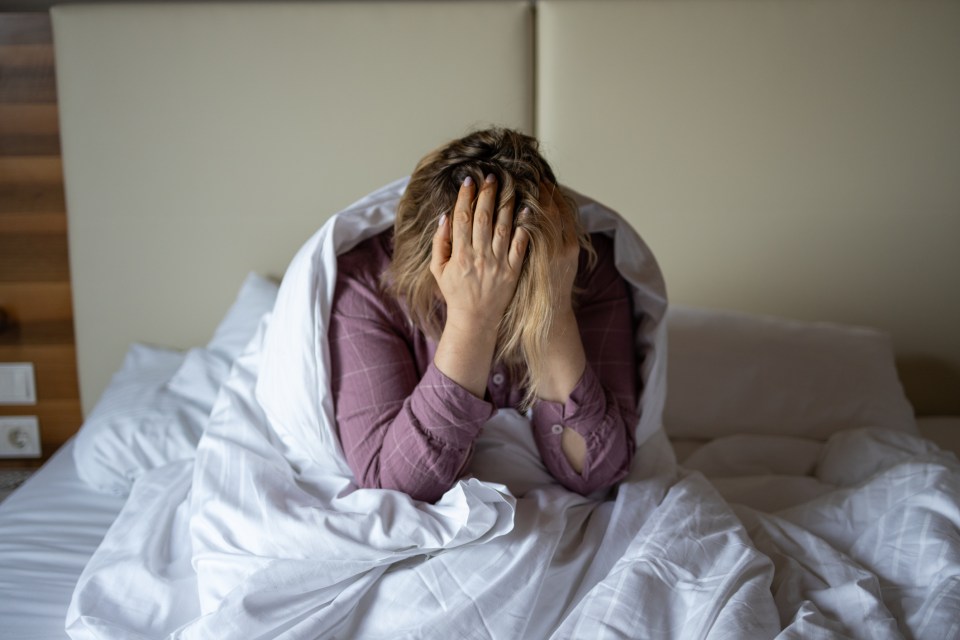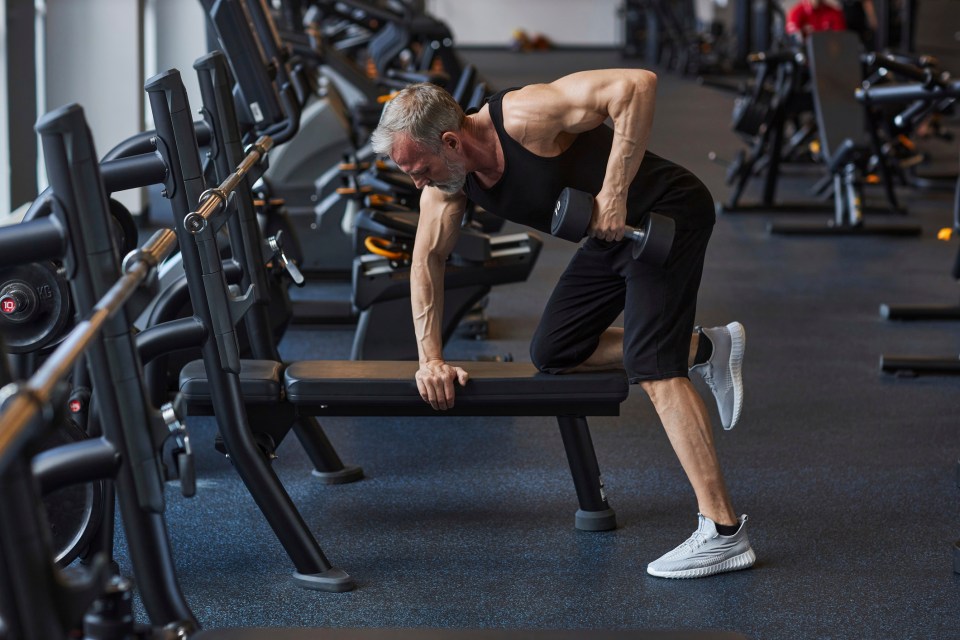SLEEP is integral to good health, playing a vital role in both physical and mental well-being.
Yet one in every three people in the UK suffer with common sleep issue insomnia, according to the NHS.
Insomnia, defined as difficulty falling asleep, staying asleep, or getting enough quality sleep, tends to be more common as we age.
Studies have shown as we get older, .
Also .
People who suffer from insomnia can find it hard to be physically active.
Read more on insomnia
But a new study has revealed one particular type of exercise could actually be key to beating the frustrating sleep disorder.
Get lifting
Lifting weights helps older people beat insomnia, research suggests.
Experts found resistance or muscle-strengthening exercises – such as lifting dumbbells or using gym equipment – helped cut sleeplessness.
Taking aerobic exercise (such as brisk walking, cycling or swimming), or a mix of exercises (such as aerobic classes, weight training and Pilates) also helped tackle insomnia, though it was less effective.
Most read in Wellness
The study, published in the journal Family Medicine And Community Health, is another example of how “sleep quality declines with age”.
It said: “Older people have more significant insomnia than younger people.
“Between 30 per cent and 48 per cent of seniors complain of sleepiness while 12–20 per cent have insomnia problems.
“Strong evidence links sleeplessness to depression, anxiety and other mental health disorders.
“Several studies have linked sleeplessness to metabolic syndrome, hypertension and heart disease. Cognitive decline and prostate cancer risk are related to insomnia.”
The researchers said previous studies have found that exercise helps insomnia but it has not been clear which type might be most beneficial.
To answer this question, they looked at 24 clinical trials involving 2,045 people who were aged 60 and over.
The types of exercise covered by the studies included: aerobic, such as cycling, dancing, swimming, brisk walking, and hiking; resistance, such as lifting weights, arm curls, wall push-ups, and resistance machines or equipment; balance, such as sideways walking, heel-to-toe walking, one-leg standing; flexibility, such as gymnastics, yoga, dance and Pilates; and combination exercise which included several types.
Across all the studies, more than half included exercise that was mild to moderate, or moderate intensity, with the average length of a session just over 50 minutes, and frequency around two to three times a week.
On average, the exercise programmes lasted 14 weeks.
The results showed that, using a standard scale of sleep and sleep quality, strength/resistance exercise was the most effective at cutting insomnia.
The scale used was the Pittsburgh Sleep Quality Index (PSQI), which is a simple questionnaire used to assess sleep.
Using this, detailed analysis showed that strength/resistance exercise improved the GPSQI by 5.75 points.
Aerobic exercise improved the GPQSI by 3.76 points while combination exercise improved it by 2.54.
The researchers, from the Mahidol University Faculty of Medicine in Bangkok, concluded: “Exercise that strengthens muscles, rather than aerobic or combination exercises, is the most effective way to enhance sleep quality.”
Huw Edwards, chief executive of ukactive, the UK’s trade body for the physical activity sector, said: “Physical activity has a huge role to play in our physical and mental health, with benefits such as better sleep, reduced stress and anxiety, and improved productivity, social connection and wellbeing.
“This study shows the essential role resistance training can play in tackling insomnia for older age groups, and we know that exercise not only supports quality sleep but that a good night’s sleep can help us feel better and be more productive the following day.
“Our own research also shows that one of the main motivations people have for exercising is to help them sleep better (66 per cent), so it is essential that everyone, no matter their age, background or ability, feels supported to be physically active in their daily lives.
Read More on The Sun
“We want to make the UK the most active nation in Europe, which would bring savings of up to £1bn a year in healthcare spending linked to physical inactivity, and an additional £3.6bn in GDP through increased productivity.”
Looking at your sleep routine and environment could also help with insomnia...
The best sleep routine and environment
Thomas Høegh Reisenhus, TEMPUR® sleep specialist & sleep counsellor, reveals the key components of a good bedtime routine and environment...
A sure-fire way to facilitate a better night’s sleep is to practice good sleep hygiene.
Establish a sleep routine that works for you and stick to it.
This will help your body establish a consistent, natural sleep-wake cycle which can do wonders for your overall sleep quality.
As such, try to avoid making up for lost sleep with a lie-in.
Instead of sleeping in, spend your morning reading a book in bed or having a leisurely coffee in the kitchen.
Ensure that your bedroom, bedding, and sleepwear are fit for purpose too.
The ideal sleep environment is dark, quiet, and cool – much like a cave.
If you find unwelcome sources of light are keeping you up, consider investing in an eye mask or black-out curtains.
Adding soft furnishings can be a great way to reduce noise, with the surfaces having an absorptive quality, but if this doesn’t work, consider embracing a soothing soundtrack to block it out.
In terms of temperature, try to keep your bedroom at 18°C. You can further reduce the risk of waking up due to overheating by ensuring that all your bedding and sleepwear is made with natural, breathable materials such as cotton and linen.
Bear in mind that everyone is different; what might work for most, may not work for you!
Whilst knowing how much sleep you should get, how to overcome common barriers, and practicing good sleep hygiene can facilitate a great night’s sleep, if you continue to struggle with sleep or fatigue persistently, do not hesitate to visit a doctor or health professional for support.












